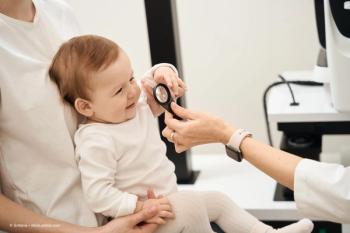
EnVision Summit 2024: The case of a highly contagious inherited retinal disease
Sruthi Arepalli, MD, discusses the case of a patient with syphilis and sheds light on the complexities of diagnosing a masquerading syndrome.
Sruthi Arepalli, MD, sat down with Modern Retina to discuss the case of a patient with syphilis and sheds light on the complexities of diagnosing a masquerading syndrome at the EnVision Summit 2024. She shares some highlights here with Group Editorial Director Sheryl Stevenson.
Video Transcript
Editor's note - This transcript has been edited for clarity.
Sheryl Stevenson: We are joined today by Dr. Sruthi Arepalli, who is among the presenters at this year's EnVision Summit. Welcome to you! So delighted to see you again. And I'm really curious about the title of your presentation, 'A Highly Contagious Inherited Retinal Disease.' Tell us about this case.
Sruthi Arepalli, MD: Yeah, absolutely. And thanks for having me. So the case that I'm presenting at the EnVision Summit is one of those masquerades syndromes that I think is really important for all of us as retina specialists or even comprehensive ophthalmologists to think about. The premise of the case is an elderly woman who came to see me and her story is very interesting. She's been seen in the community at some of the hospitals that are affiliated with mine in the past, and she's always been told that she has an inherited retinal disease. And that's because she has some very striking chorioretinal scarring throughout both of her retinas but it's been stable. The reason she was given this diagnosis is not that she had genetic testing but her father had a questionable inherited retinal disease and everyone sort of kept working off that diagnosis and pushing that forward in her notes. When you talk to her, it's also really interesting because her husband had died about 10 years ago from a medical complication but nobody really had a lot of history on that.
So when she came to see me, she was totally new to me. And her chart said, inherited retinal disease. I looked at her and a couple of things didn't quite fit.
One of those things were that her optic nerve didn't look pale or atrophic like you sort of see with an inherited retinal disease. Her blood vessels in the retina didn't look very attenuated but she did have this bilateral but asymmetric chorioretinal scarring. And just a tiny bit of vitreous cell, just the smallest amount.
And so I told her, listen, since you're new to me, I want to accept this diagnosis because you've been carrying it for 10 or so years. But I also practice uveitis and I would like to just rule out some of the big infections that I think about when I see something like this, one of those is syphilis. She said fine, and I ran those tests, and they came back positive. So I brought her back into the clinic. And we talked about the fact that she had this very atypical scarring that can present in syphilis. And to be fair, I really felt like it was more consistent with syphilis than inherited retinal disease.
At that visit, she actually brought a family member with her and her family member kind of jumps into the conversation and says: Oh, you know, it's so interesting. We were actually told the same thing a couple of months ago, and my mother was treated with IV penicillin. She just doesn't really believe the diagnosis. So that's why she didn't tell you about it.
One, syphilis can masquerade as anything. And she likely had undertreated chronic neurosyphilis for a long time.
And so we went through her records, and I contacted her infectious disease specialist, and we all sort of put our heads together—the referring doctor from the community, myself, and the infectious disease doctor—and we decided she'd been treated adequately.
Two, it's the fact that if a patient comes in with a diagnosis, it doesn't always mean it's the correct diagnosis. And so to always step back and look at them and understand if it fits what we've given them or if there's something else that could explain it.
But for me, there were a lot of teaching points that came up in this case that I just love.
Third is that patients sometimes will hold back information because they may not believe in the diagnosis or may not understand the diagnosis.
And so when I brought up with her I'm concerned for syphilis the first time, she sort of didn't really give me much to go off of because she didn't really believe in that even though someone had very recently done the same exact workup as me, and she came to me sort of as a second opinion. But just keeping those three things in mind when you approach a difficult patient and sort of unearth what they actually have.
Stevenson: What an interesting case and certainly some very valuable learnings and teachings from that. So thank you so much for sharing that.
Newsletter
Keep your retina practice on the forefront—subscribe for expert analysis and emerging trends in retinal disease management.















































